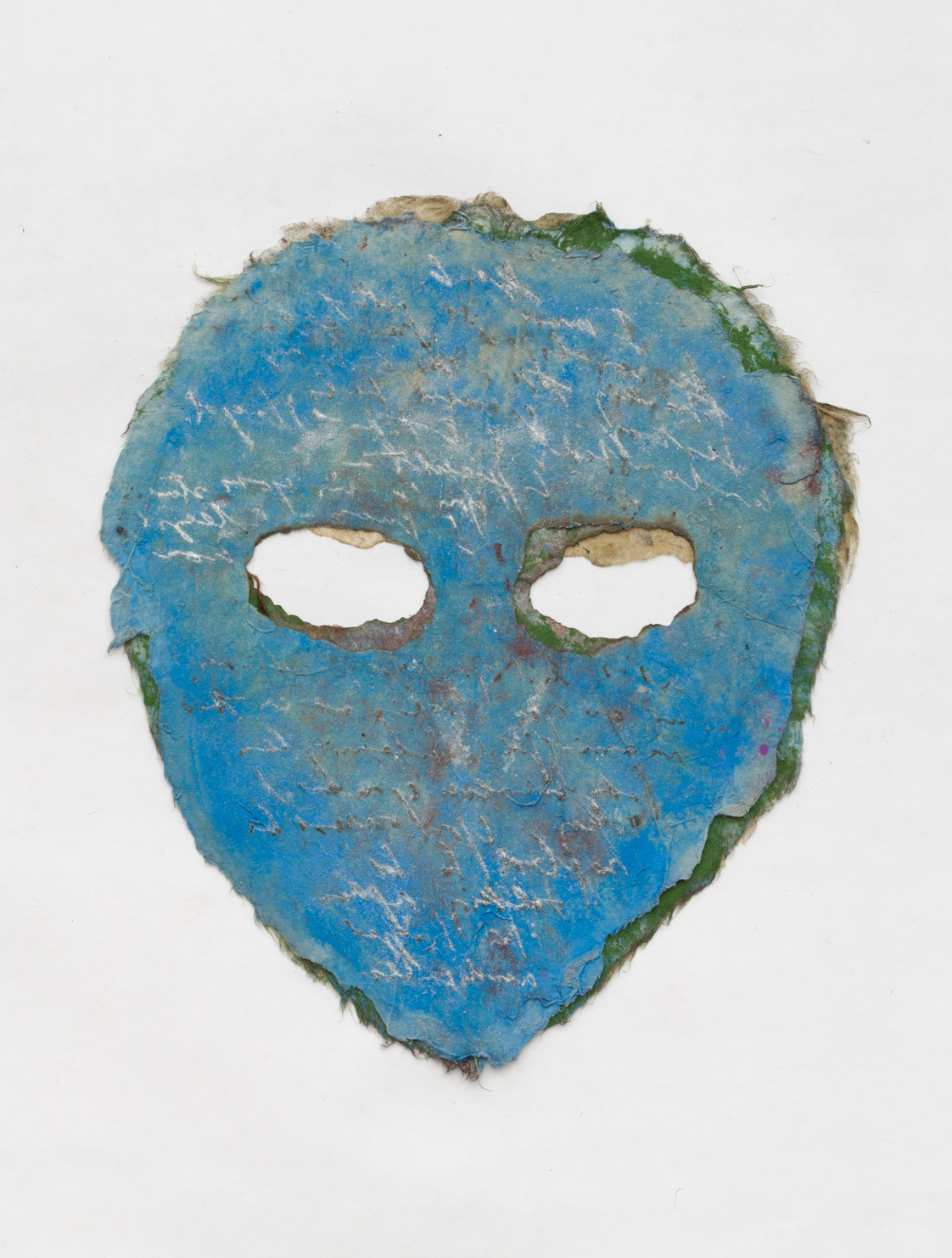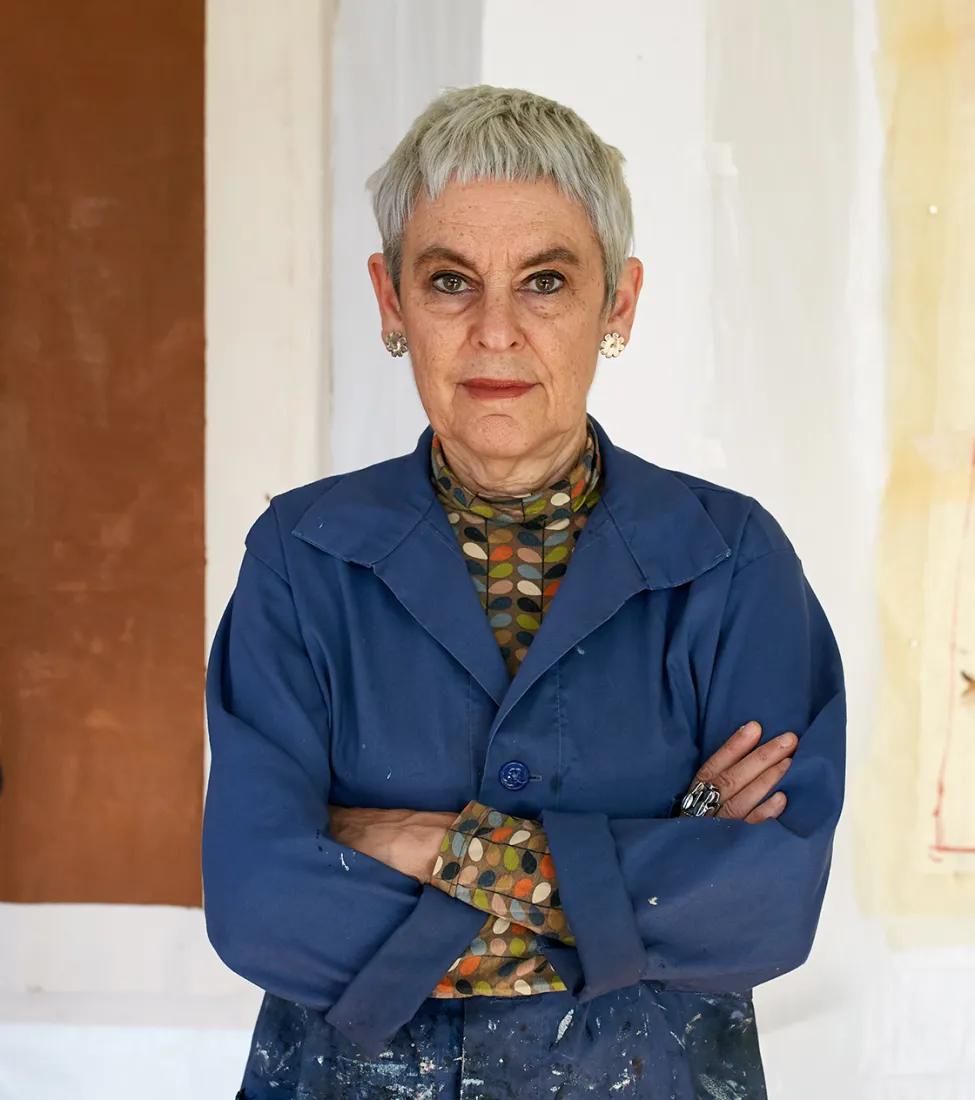Mira Schor

From September 2023 to January 2024, the Pinault Collection presented Mira Schor's Moon Room exhibition at the Bourse de Commerce, as part of the "American Mythologies" season: a series of solo exhibitions featuring Mike Kelley, Lee Lozano and Ser Serpas - all of them marked by countercultures and a refusal to play by the rules.
An artist, writer, publisher, educator, and art critic, Mira Schor’s multiple engagements have secured her a singular place in the contemporary art scene. She is known mainly for her painting, a medium that she explores and advocates for in particular, and for her contributions to the history of feminist art. All the works featured in Mira Schor’s exhibition “Moon Room” come from the Pinault Collection.
Her work expresses her political and theoretical concerns as much as it testifies to her passion for formalism, material, and language. For Schor, language is not a way to illustrate political battles, instead an example of what a female artist’s gaze can produce. Through the personal, intimate narratives that she instills in her works, Schor explores thought, memory, perception, and affects, with an abiding, deep interest “in the return of visual pleasure as a feminist intervention in painting”.
This first-ever exhibition in France features works on rice paper made by Schor in the second half of the 1970s along with a recent painting made in 2022. With their fragile, solitary presence, the masks and dresses are covered with highly personal, handwritten texts about her dreams and her interpretations of them, along with reflections on the Holocaust, to which she lost some of her family, and political writings. “In these works on paper, all that remains of the body are traces of its active, thoughtful character: writing,” which appears in transparency, as an overlay, or as an erasure, “which thus complicates women’s legibility”, wrote Mira Schor. With her incessant interrogation of painting, Schor presents a representation of her own body in the heart of this exhibition Time/spirit (New Red Moon Room), an oil on canvas from 2022. This recent work bookends with the one she made in 1972 at Womanhouse. Lit by a bright, red moon, the artist’s completely painted figure, standing, as if in motion, is now depicted lying in bed, drawn with a furtive stroke of just a few lines.
When one enters the very unique space of the Studio in the Bourse de Commerce, it is as if one penetrates a very intimate space, a “room of her own”, a creative space in which visitors experience the passage of time in the gaze of a feminist, politically engaged woman artist. In this layout, designed by Schor herself, this group of enigmatic figures expresses all the power and vitality of a group and of the individuals who constitute it. These works testify to the artist’s passion for language. In her canvasses, words appear at times as fully legible, and at others, more discretely and transparently, embedded in the different layers of materials of the dresses and masks. The representation of language has formed a constant, recurring motif of her pictorial oeuvre, even before she began to write critical texts on art and the history of feminist art:
“My interest in language as image has been based from the beginning on feeling that women are filled with language, and by language I mean not only feelings, hopes and fears, but also ideas, philosophies and stories, even if they are not generally considered as such.”
Biography of the artist
Born in the United States in 1950, Mira Schor lives and works in New York City. After studying in CalArts’ Feminist Art Program and at Womanhouse in the early 1970s (one of the most important and well-known art projects in the history of feminist art), Mira Schor continued to combine “visual pleasure” and painting with philosophical, existential, and political concerns through works anchored in her own inner life, thereby reinforcing her interest in narration and autobiography. Schor inserted the woman’s gaze into a male-dominated pictorial tradition. Some periods of her oeuvre highlighted narration and representation of the body, while in others, her work focused more on the representation of language in drawing and painting. Her works thus deal with the appropriation and subjectification of the female body.
